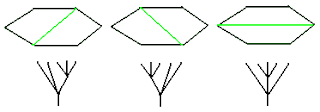AF posted this a
while back, but since hardly anybody seems to have considered it, let me post it once again: excerpts from the
Declaration of Academic Freedom.
Article 2: Who is a scientist
A scientist is any person who does science. Any person who collaborates with a scientist in developing and propounding ideas and data in research or application is also a scientist. The holding of a formal qualification is not a prerequisite for a person to be a scientist.
Article 4: Freedom of choice of research theme
Many scientists working for higher research degrees or in other research programmes at academic institutions such as universities and colleges of advanced study, are prevented from working upon a research theme of their own choice by senior academic and/or administrative officials, not for lack of support facilities but instead because the academic hierarchy and/or other officials simply do not approve of the line of inquiry owing to its potential to upset mainstream dogma, favoured theories, or the funding of other projects that might be discredited by the proposed research. The authority of the orthodox majority is quite often evoked to scuttle a research project so that authority and budgets are not upset. This commonplace practice is a deliberate obstruction to free scientific thought, is unscientific in the extreme, and is criminal. It cannot be tolerated.
A scientist working for any academic institution, authority or agency, is to be completely free as to choice of a research theme, limited only by the material support and intellectual skills able to be offered by the educational institution, agency or authority. If a scientist carries out research as a member of a collaborative group, the research directors and team leaders shall be limited to advisory and consulting roles in relation to choice of a relevant research theme by a scientist in the group.
Article 8: Freedom to publish scientific results
A deplorable censorship of scientific papers has now become the standard practice of the editorial boards of major journals and electronic archives, and their bands of alleged expert referees. The referees are for the most part protected by anonymity so that an author cannot verify their alleged expertise. Papers are now routinely rejected if the author disagrees with or contradicts preferred theory and the mainstream orthodoxy. Many papers are now rejected automatically by virtue of the appearance in the author list of a particular scientist who has not found favour with the editors, the referees, or other expert censors, without any regard whatsoever for the contents of the paper. There is a blacklisting of dissenting scientists and this list is ommunicated between participating editorial boards. This all amounts to gross bias and a culpable suppression of free thinking, and are to be condemned by the international scientific community.
All scientists shall have the right to present their scientific research results, in whole or in part, at relevant scientific conferences, and to publish the same in printed scientific journals, electronic archives, and any other media. No scientist shall have their papers or reports rejected when submitted for publication in scientific journals, electronic archives, or other media, simply because their work questions current majority opinion, conflicts with the views of an editorial board, undermines the bases of other current or planned research projects by other scientists, is in conflict with any political dogma or religious creed, or the personal opinion of another, and no scientist shall be blacklisted or otherwise censured and prevented from publication by any other person whomsoever. No scientist shall block, modify, or otherwise interfere with the publication of a scientist's work in the promise of any presents or other bribes whatsoever.















